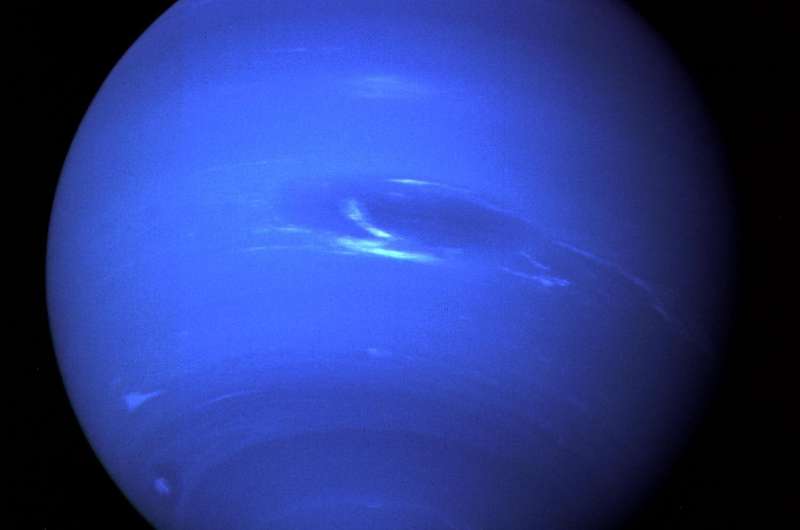Scientists predict Neptune's chemical make-up

Scientists have helped solve the mystery of what lies beneath the surface of Neptune – the most distant planet in our solar system. A new study sheds light on the chemical make-up of the planet, which lies around 4.5 billion kilometres from the sun.
Frozen worlds
Extremely low temperatures on planets like Neptune – called ice giants – mean that chemicals on these distant worlds exist in a frozen state, researchers say. Frozen mixtures of water, ammonia and methane make up a thick layer between the planets' atmosphere and core – known as the mantle. However, the form in which these chemicals are stored is poorly understood.
Using laboratory experiments to study these conditions is difficult, as it is very hard to recreate the extreme pressures and temperatures found on ice giants, researchers say. Instead, scientists at Edinburgh ran large-scale computer simulations of conditions in the mantle.
By looking at how the chemicals there react with each other at very high pressures and low temperatures, they were able to predict which compounds are formed in the mantle. "Computer models are a great tool to study these extreme places, and we are now building on this study to get an even more complete picture of what goes on there," says Dr Andreas Hermann.
Chemical compound
The team found that frozen mixtures of water and ammonia inside Neptune – and other ice giants, including Uranus – likely form a little-studied compound called ammonia hemihydrate. The findings will influence how ice giants are studied in future and could help astronomers classify newly discovered planets as they look deeper into space.
The study, published in the journal Proceedings of the National Academy of Sciences, was supported by Engineering and Physical Sciences Research Council. The work was carried out in collaboration with scientists at Jilin University, China.
"This study helps us better predict what is inside icy planets like Neptune. Our findings suggest that ammonia hemihydrate could be an important component of the mantle in ice giants, and will help improve our understanding of these frozen worlds," says Dr Hermann.
More information: Victor Naden Robinson et al. Stabilization of ammonia-rich hydrate inside icy planets, Proceedings of the National Academy of Sciences (2017). DOI: 10.1073/pnas.1706244114
Journal information: Proceedings of the National Academy of Sciences
Provided by University of Edinburgh


















